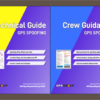Relationships between Taiwan and China have become increasingly strained over the last month and officials are starting to question whether this might be impacting aviation safety in the region. Here is a look at the conflict and the potential impact it may have on commercial operations.
The background.
Taiwan and China have a long and ongoing dispute over whether Taiwan is Taiwan – an independent country, or Taiwan – a breakaway province that is still part of China. China is officially known as the People’s Republic of China (PRC), while Taiwan refers to themselves as the Republic of China (ROC).
Similar to Hong Kong, Taiwan has retained a high level of independence from mainland China, and effectively governs itself, having its own constitution, democratically-elected leaders, and own armed forces.
Unlike Hong Kong however, Taiwan rejected China’s “one country, two systems” formula which would have enabled them to retain autonomy, while reunifying with China. It remains a disputed country with few countries around the world recognising it as a sovereign nation independent of China.
This is at the root of this conflict, and in recent months China has become more assertive in their control over Taiwan.
Here is a good summary of the political situation.
What are China doing?
China have been “re-asserting” themselves over Taiwan by carrying out repeated incursions into the Taiwanese Air Defense zone. A recent incursion saw 39 military jets fly into the zone, for the second day in a row. The aircraft included 2 Y-8 anti-submarine aircraft, 26 J-16 fighter jets, 10 Su-30 fighters and a KJ-500 early warning and control aircraft.
They are reports of a 52 aircraft incursion which included 16 nuclear-capable H-6 bombers.

PLA (Peoples’ Liberation Army) = China’s military forces.
Where is the airspace?
Taiwanese national airspace is the airspace over Taiwanese land, extending to 12nm off their coast over the territorial waters. Military aircraft are not allowed to enter any national airspace without express permission from the state. China did not violate the national airspace, but did violate the ADIZ.
An ADIZ is different to national airspace, and is specifically declared by a state for reasons of military air defence. Some states designate their entire airspace as an ADIZ (Iran being a good example).
Taiwan’s ADIZ sits between Taiwan and continental Asia, over the South China Sea (the Taiwan Strait), shown (approximately) below. The ADIZ itself is disputed as well though since it overlaps and includes disputed territories.
 Is there any threat to civil aircraft?
Is there any threat to civil aircraft?
The ADIZ overlaps international civil flight routes. The increase in military traffic and activity in the area is a potential threat.
Taiwan’s response to the repeated incursions has been to scramble their own military aircraft, issue radio warnings and deploy their air defence missile systems. The deployment of air defence systems could raise the risk of misidentification between civil and military aircraft, if Chinese aircraft do stray beyond the ADIZ and into national airspace.
The Vice Defense Minster for Taiwan suggested the incursions “are affecting the safety of international flights,” but the statement was possibly political and as yet there has been no report of civil aircraft being impacted by the situation.
Procedures in Taiwan’s ADIZ.
You can read the procedures in full in Taiwan’s AIP ENR 1.12.1, or download a PDF here. But here’s a summary of how it works:
- There are restrictions for non-tactical aircraft in the area including no flight below 4000’, and to maintain flight along designated airways. ATC contact must be obtained prior to entry.
- Aircraft will be intercepted by the Chinese Air Force if they fail to follow ADIZ procedures, or if they exceed 5 mins ETA of a designated reporting point, deviate more than 20nm from the airway entrance or have greater than a 2000’ difference from assigned altitude.
- Basically, if you are flying in the ADIZ, make sure you’re in contact with ATC, and don’t do anything without telling them first. Pretty standard stuff for operating through an ADIZ.

The Taiwanese do have their own Air Force, partly funded by the US.
General ops.
We wrote about operations to Taiwan back in 2019 and it is worth having a quick read because if you are a foreign registered aircraft because:
- You are not allowed to operate directly between China and Taiwan
- If you need to make a tech stop between the two then aim for VHHH/Hong Kong or VMMC/Macau
- You probably aren’t going to get permission to overfly China if you are routing to Taiwan from anywhere else.
You can read more on this here.
Back in 2018, there was also a dispute over China’s M503 airway. The airway is a main north-to-south route for aircraft heading to Hong Kong or Macau from Southeast Asia. Taiwan didn’t like it because it lies so close to the FIR boundary separating Chinese and Taiwanese airspace.
The result of the dispute seemed to be a sort of “tough luck” from China, and aircraft still regularly use the airway. More on this here.
The risk level?
While the ongoing conflict and aggressions do threaten the general peace and stability of the region, there is no immediate threat to commercial operations. Maintain a good listening watch if operating in the area and ensure you are in contact with ATC if operating through the ADIZ.
More on the topic:
- More: China-Taiwan M503 Airway Dispute
- More: The Annual Shanghai Airports Meltdown
- More: Shanghai: ZSSS closed to non-sched traffic
- More: Come fly around China as much as you like!
- More: New US Rule for China Arrivals
More reading:
- Latest: ADS-B Controversy? Landing Fee Fuss in Florida
- Latest: UK Electronic Travel Authorization – The BizAv Guide
- Latest: Vegas F1: Brace Yourself for Special Event Fees
- Safe Airspace: Risk Database
- Weekly Ops Bulletin: Subscribe
- Membership plans: Why join OPSGROUP?











 Get the famous weekly
Get the famous weekly 






You don’t mention the remarkable extension of the Taiwan ADIZ over an extensive area of the mainland, evident in your second map. You don’t indicate a source for the first map. The ROC was the Nationalist Party (KMT) government until 1949 when Nationalist forces and government retreated to Taiwan with half the treasures of Beijing. Taiwan was regarded by China as territory of China from the 1600s when they expelled Dutch who had expelled the Portuguese. Japan took Taiwan when defeating China in war in the 1890s. It was returned to China after Japan’s defeat in WW2. While the KMT dominated government in Taiwan until the 1980s there were seats in the National Assembly from the mainland, of China and the Mongolian Peoples Republic, seats vacant because of the “emergency situation on the mainland. The KMT, which favours reunification, is the opposition in the parliament in Taipei and won most seats in the last local elections. The desire for independence in Taiwan is not unanimous. Be careful which megaphone you listen to. 🙂
Interesting summary. Thanks Dennis. We actually try to avoid getting too much into the “Who did what’s” as we’re not trying to provide any political commentary (or opinion) on it – sometimes its hard not to if we need to mention some bits to make the aviation safety aspects clear. The ADIZ image map was based off ones online from fairly credible sources (and not particularly, or intentionally “megaphone” ones). We don’t always get it right and would be very keen on amending this if it is depicting the wrong area, but from a few searches today I can only find similar charts and have not spotted any that show it otherwise.
Aircraft will be intercepted by the Chinese Air Force (PLA) … I am not so sure how familiar you are with the parties involved in this conflict, maybe you should say (ROCAF) instead.
The country RAR for Taiwan talks about the ADIZ airspace restrictions and states that aircraft will be intercepted by Chinese Air Force (CAF) aircraft, not ROCAF. ROCAF would make more sense, but given the RAR states the CAF and I’m not sure which that actually applies to, I’ve written it as is in the RAR. Either way, the point is you will be intercepted if you don’t stick to where you should be.
Great article Bec – well done!